by Lem Bingley 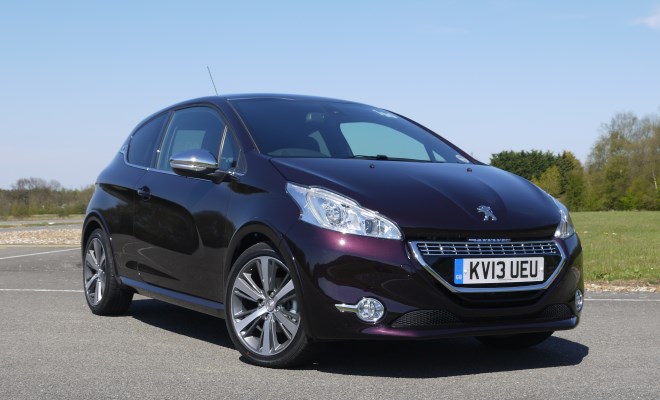
While pitched as a fashion-conscious choice, the new Peugeot 208 XY doesn’t quite fit current trends, being a mainstream, price-sensitive small car that has had premium fittings thrown at it. Perhaps Peugeot feels the 208 is a cut above the hoi polloi already. Or maybe we are looking at the modern equivalent of the Austin Metro Vanden Plas, an attempt to charge a premium for a sub-prime product, with shortcomings hidden beneath a herd’s worth of hide.

First impressions are positive, at least. The 208 provides a much better canvas than the gormless 207 that went before it, with shorter overhangs, crisp creases and interesting details. The XY looks simply fabulous in its signature metallic “Purple Night” paint, decorated with chrome and satin-finish brightwork. White, black and blue colours are also options with the XY, though the model is limited to the three-door body format. Eye-catching 17-inch alloys are a standard fit.
The name XY apparently refers to Peugeot’s aim of making the model appeal to both men and women, with vague mutterings about gender-defining chromosomes. Evidently the French company’s marketing team failed biology, given that XY represents a resolutely male chromosome pair (XX signifies a female). But with a stance resembling the macho 208 GTi coupled with jewel-like details, the XY certainly looks gender neutral, or at least metrosexual.

Inside, Peugeot has done a fine job of lifting the ordinary car’s interior. The XY’s dashboard comes decorated with pale grey stitched leather (fake, sadly), while my test car featured beautiful real leather and Alcantara upholstery with purple stitching – a £750 option over the standard fit cloth seats. For the same upgrade price, full leather seating is also available.
The clean and classy look of the interior is both helped and hindered by the car’s central touchscreen. It helps by decluttering the car of the usual festival of assorted buttons, but loses points for its plasticky feel. It would never be mistaken for a docked iPad.
Satin metal door pulls and a leather-trimmed wheel ensure that at least some parts of the XY feel good to the touch.
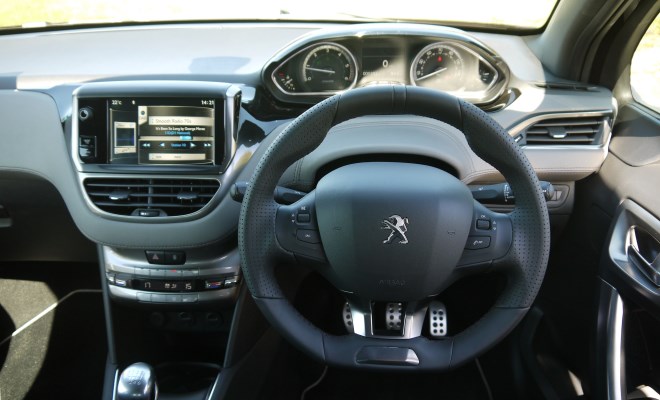
The steering wheel itself is one of the most distinctive features of the 208. Seemingly about the size of a saucer, it’s designed so that the driver views the instrument panel over the top of the wheel rather than through the middle. The intention is that you position the wheel so that its bottom edge is as close to your knees as normal. Grasping at 10-to-2 thus feels a little like driving with your hands in your lap. It seems odd to begin with, but I suspect the 208 might prove more comfortable than other cars on a long motorway stint.
There are three 1.6-litre engines to choose among – two petrols and a diesel available in two states of tune. The petrol pair offer either 120bhp or 156bhp, with CO2 output of 118g/km and 134g/km respectively. The diesel can be chosen with either 92bhp or 115bhp, with scores of 95g/km or 99g/km. A six-speed automated manual gearbox can be selected with the lower-powered diesel, bumping up the CO2 result to 98g/km. Five-speed manual gearboxes feature in the lesser petrol and diesel cars, while six-speeds appear on the two more powerful options.
Prices run from £16,600 for the cheaper petrol through to £18,095 for the more powerful diesel.
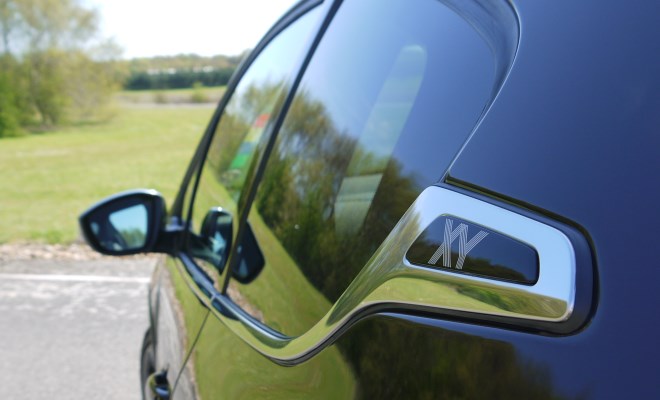
My particular XY came with the beefier e-HDi diesel and a 99g/km rating. It landed a combined cycle score of 74.3mpg in its exams, aided by automatic stop/start, while its sprint to 62mph was clocked at a reasonably swift 10.8 seconds. Peak output is 115bhp at 3,600rpm while peak torque of 199lbft can be felt from 1,750rpm.
Peugeot has worked hard to trim the 208’s heft, and at 1,090kg my diesel model wasn’t too lardy for its size, coming in at about 70kg below a diesel VW Polo, for example. It certainly felt light on its toes, its keenness to change direction helped by a widened track shared with the GTi. The XY is much more softly sprung than a hot hatch, however, rolling a fair bit though tight corners but providing a pleasant suppleness over bumps and ruts.
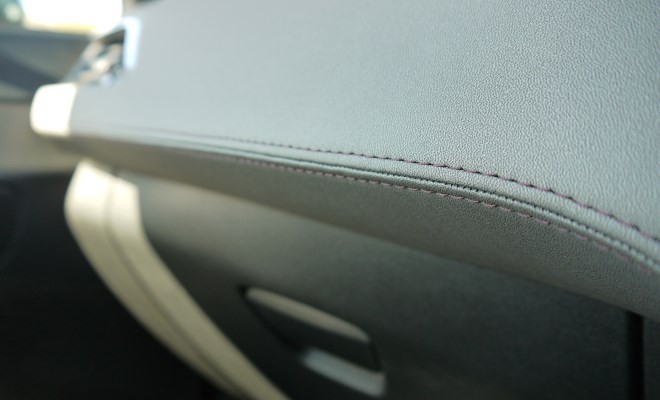
The 208 XY is not so loose that it can’t be fun to drive, though. The neat and tidy gearshift is matched by a light and even feel from the miniaturised steering wheel, and the engine feels decently eager. My test didn’t last long enough to assess real-world economy, but with six well-spaced ratios in the box it ought to be possible to make progress using the engine’s torque below 2,000rpm all the way up to motorway speeds, which is usually a good recipe for thrifty economy.
Most buyers will probably be more interested in the XY’s good looks than its sparkling personality, however. And for me, at least, it does the job both inside and out. It may not have the cachet of a Mini, but the XY should give that car’s chasing pack a good run for their money.
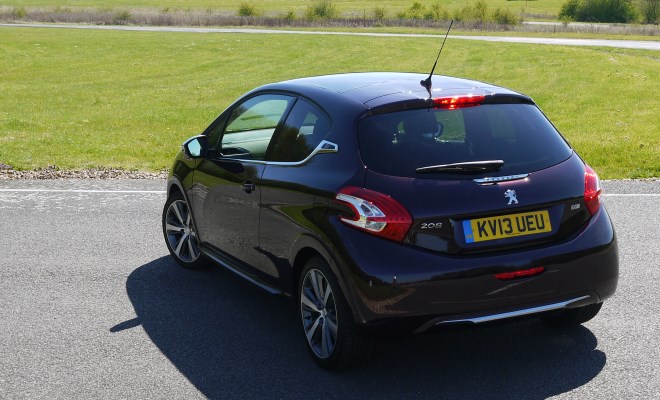

Peugeot 208 XY
Rating: stars
Good: Arresting looks, lovely optional seats
Bad: Patchy interior, fake leather
Price: from £16,600
Fiat, Citroen and Vauxhall have all created distinct models aimed at buyers looking for a small car with premium ambitions. All were evidently inspired by BMW’s super-successful Mini, and the 500 and DS3 have proven that even less lustrous brands can grab a big slice of profitable action. We’re still waiting to see if Vauxhall’s Adam can earn a place inside the velvet ropes or will be shown to the tradesman’s entrance. Rating: stars
Good: Arresting looks, lovely optional seats
Bad: Patchy interior, fake leather
Price: from £16,600
While pitched as a fashion-conscious choice, the new Peugeot 208 XY doesn’t quite fit current trends, being a mainstream, price-sensitive small car that has had premium fittings thrown at it. Perhaps Peugeot feels the 208 is a cut above the hoi polloi already. Or maybe we are looking at the modern equivalent of the Austin Metro Vanden Plas, an attempt to charge a premium for a sub-prime product, with shortcomings hidden beneath a herd’s worth of hide.

First impressions are positive, at least. The 208 provides a much better canvas than the gormless 207 that went before it, with shorter overhangs, crisp creases and interesting details. The XY looks simply fabulous in its signature metallic “Purple Night” paint, decorated with chrome and satin-finish brightwork. White, black and blue colours are also options with the XY, though the model is limited to the three-door body format. Eye-catching 17-inch alloys are a standard fit.
The name XY apparently refers to Peugeot’s aim of making the model appeal to both men and women, with vague mutterings about gender-defining chromosomes. Evidently the French company’s marketing team failed biology, given that XY represents a resolutely male chromosome pair (XX signifies a female). But with a stance resembling the macho 208 GTi coupled with jewel-like details, the XY certainly looks gender neutral, or at least metrosexual.

Inside, Peugeot has done a fine job of lifting the ordinary car’s interior. The XY’s dashboard comes decorated with pale grey stitched leather (fake, sadly), while my test car featured beautiful real leather and Alcantara upholstery with purple stitching – a £750 option over the standard fit cloth seats. For the same upgrade price, full leather seating is also available.
The clean and classy look of the interior is both helped and hindered by the car’s central touchscreen. It helps by decluttering the car of the usual festival of assorted buttons, but loses points for its plasticky feel. It would never be mistaken for a docked iPad.
Satin metal door pulls and a leather-trimmed wheel ensure that at least some parts of the XY feel good to the touch.

The steering wheel itself is one of the most distinctive features of the 208. Seemingly about the size of a saucer, it’s designed so that the driver views the instrument panel over the top of the wheel rather than through the middle. The intention is that you position the wheel so that its bottom edge is as close to your knees as normal. Grasping at 10-to-2 thus feels a little like driving with your hands in your lap. It seems odd to begin with, but I suspect the 208 might prove more comfortable than other cars on a long motorway stint.
There are three 1.6-litre engines to choose among – two petrols and a diesel available in two states of tune. The petrol pair offer either 120bhp or 156bhp, with CO2 output of 118g/km and 134g/km respectively. The diesel can be chosen with either 92bhp or 115bhp, with scores of 95g/km or 99g/km. A six-speed automated manual gearbox can be selected with the lower-powered diesel, bumping up the CO2 result to 98g/km. Five-speed manual gearboxes feature in the lesser petrol and diesel cars, while six-speeds appear on the two more powerful options.
Prices run from £16,600 for the cheaper petrol through to £18,095 for the more powerful diesel.

My particular XY came with the beefier e-HDi diesel and a 99g/km rating. It landed a combined cycle score of 74.3mpg in its exams, aided by automatic stop/start, while its sprint to 62mph was clocked at a reasonably swift 10.8 seconds. Peak output is 115bhp at 3,600rpm while peak torque of 199lbft can be felt from 1,750rpm.
Peugeot has worked hard to trim the 208’s heft, and at 1,090kg my diesel model wasn’t too lardy for its size, coming in at about 70kg below a diesel VW Polo, for example. It certainly felt light on its toes, its keenness to change direction helped by a widened track shared with the GTi. The XY is much more softly sprung than a hot hatch, however, rolling a fair bit though tight corners but providing a pleasant suppleness over bumps and ruts.

The 208 XY is not so loose that it can’t be fun to drive, though. The neat and tidy gearshift is matched by a light and even feel from the miniaturised steering wheel, and the engine feels decently eager. My test didn’t last long enough to assess real-world economy, but with six well-spaced ratios in the box it ought to be possible to make progress using the engine’s torque below 2,000rpm all the way up to motorway speeds, which is usually a good recipe for thrifty economy.
Most buyers will probably be more interested in the XY’s good looks than its sparkling personality, however. And for me, at least, it does the job both inside and out. It may not have the cachet of a Mini, but the XY should give that car’s chasing pack a good run for their money.




